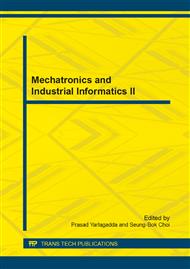p.384
p.388
p.394
p.398
p.402
p.406
p.413
p.417
p.422
Compact Wake-Up Word Speech Recognition on Embedded Platforms
Abstract:
The wake-up word speech recognition system is a new paradigm in the field of automatic speech recognition (ASR). This new paradigm is not yet widely recognized but useful in many applications such as mobile phones and smart home systems. In this paper we describe the development of a compact wake-up word recognizer for embedded platforms. To keep resource cost low, a variety of simplification techniques are used. Speech feature observations are compressed to lower dimension and the simple distance-based template matching method is used in place of complex Viterbi scoring. We apply double scoring method to achieve a better performance. To cooperate with double scoring method, the support vector machine classifier is used as well. We were able to accomplish a performance improvement with false rejection rate reduced from 6.88% to 5.50% and false acceptance rate reduced from 8.40% to 3.01%.
Info:
Periodical:
Pages:
402-405
Citation:
Online since:
July 2014
Authors:
Price:
Сopyright:
© 2014 Trans Tech Publications Ltd. All Rights Reserved
Share:
Citation:


